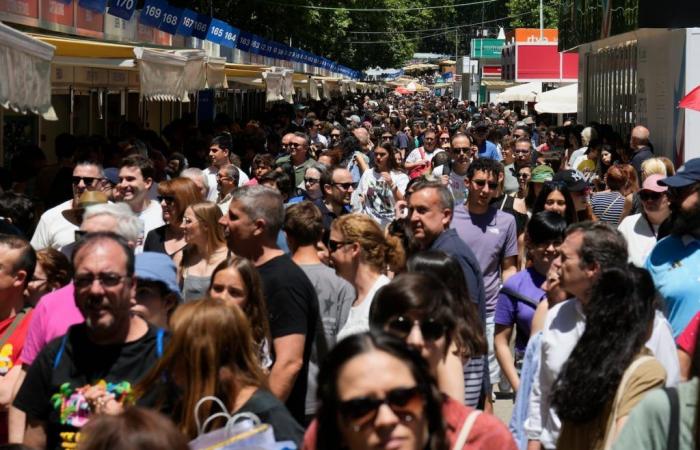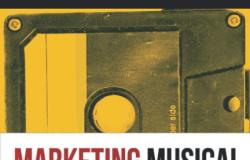At the Book Fair, readers and the curious will see volumes of all sizes, colors, themes and conditions, but those inside the booths, the booksellers, the editors, the writers, the fair-goers in general, whatever Let’s see it’s people. People, people and more people. There are many books in the world, very different, like trading cards or cards, but there are even more people, strange, diverse, unpredictable. People who say “if that’s what I’ll come back later and buy it” (and never come back), people who are experts in books, people who were just passing by, people who surreptitiously stick a finger up their nose. Those people who advance like a flow of flesh and blood through that rectangle of the world that overlooks the booth. Many fairgrounders confess that it takes them a while to get it out of their skulls. The fair ends and they continue seeing the rectangular world full of people random. Don’t worry, in the end it will pass.
This Sunday, after two weeks of activity, the Fair closed. The provisional data (measured only until June 9) are these: 5,580,000 euros collected and 550,000 unique visitors (not counting minors), figures similar to those of last year. “I think we can be satisfied. Despite the weather disturbances, the alerts that forced us to change opening hours and scheduled events on the fly, the public has filled the El Retiro Paseo de Coches for another year,” said director Eva Orúe. “And to this general satisfaction is added the confirmation of an intuition: more and more people are visiting us from neighboring communities but also from distant countries,” she added. The final figures are given on Thursday.
This year the Fair had an unexpected theme: sport, which was the backbone of a good part of the 350 events held. From some sectors of culture, with a certain snobbery, there was suspicion for a long time of that healthy men in healthy corpore, so some poets and thinkers boasted of despising physical exercise and sports practice. A Platonic dualism: the dirty physical world against the Apollonian world of ideas. If we learned one thing at the Fair, it is that sport has many connections with books and sports figures such as Miguel Pardeza (the most cultured soccer player in the world), Teresa Perales, Almudena Cid or Fermín Cacho passed through there, in addition to the usual writers . The big name, perhaps, is that of the American novelist Richard Ford.
Seen from the outside, the Fair seems like a peaceful and enlightened cultural event, but it is full of underground tensions: to get a booth, to have a good place, between booksellers and publishers, between fair sellers and municipal authorities. This year there was some discord in the central days, when the City Council issued some weather alerts that forced the closure of the Retiro and, therefore, the Fair. Alerts that were somewhat confusing, that first closed and then opened on the fly, and people got confused and indignant. There were good showers, although not as many as last year (which were 50% of the days). Every year it rains, and every year people are surprised that it rains, as if selective memory only recorded days of splendid sunshine.
Society is reflected in the Fair
The world of books is not separated from society, quite the opposite, so that some tensions from the public debate are also transferred to the fair. At least two authors, journalists Antonio Maestre and Fonsi Lozaina, had to have special security at their firms due to threats from neo-Nazi groups. Palestine was present, not only in the visit of the canceled author, Adania Shibli, to the Frankfurt Fair, but also in some small demonstration with the “stop genocide” banner, in reference to the Israeli military operation in Gaza.
The draw decided that two Arab-themed booths, the Diwan bookstore and the Balqís, from the Arab House, were wall to wall. In the latter, Palestinian flags were shown mixed with motifs of the Guernica, and the support for the cause shown by readers was congratulated. Not far away was the booth of the Sefarad-Israel Center, managed by the Nagrela publishing house, specialized in Jewish issues. A reader claims to have been rudely expelled by “thugs” for privately criticizing some of the Israeli books on display. At the booth they also claim to have suffered some “altercation” at the hands of pro-Palestinian activists, which led them to install a security camera. Furthermore, in some booths posters were displayed against some of the companies sponsoring the Fair: they criticized Repsol, for pollution, and Caixabank, for evictions.
In the entire Fair there were only a few booksellers who carried weapons (at least that we know of). They were the uniformed men from the National Police booth, who, positioned in the center of the event, sold copies of the magazine, guns at their belts. Police science or a thick tome about the UIP, that is, the riot police. In the Testimony of Catholic Authors booth they mixed Chesterton with the shepherd boys to whom the Virgin appeared in Fatima. Photos of feminists such as Betty Friedan, Vandana Shiva and Adrienne Rich were displayed in the Mujeres bookstore. The Indómitas mini-fair, within the fair, brought to the general public the work of tiny publishers that cross the border of the book and enter the world of art. There is everything. In the booth of the La Imprenta bookstore, very militant, they entertained the signatories with a resounding jug to refresh themselves. Rumors said that some other booth had a refrigerator with which to offer authors alcoholic drinks, something outside the regulations, but this newspaper has not been able to confirm this. The night parties, like every year, filled the booths with poorly concealed hangovers.
As the Fair is not about literature in particular, but about books in general (something that some critics of the matter do not fully understand), each year some of the largest queues form in front of television celebrities, influencers, youtubers and all kinds of famous people, because nowadays everyone writes a book, or has one written for them. If last year the big pink event was the signing of Ana Obregón, this year she appeared, bridging the gap, celebrity Cristina Pedroche, who gathered hundreds of fans around her book about her maternal experience. Queen Letizia opened the Fair, like every year, and the Minister of Labor and Vice President Yolanda Díaz took a copy of The abolition of work (Pumpkin Seeds), by Bob Black. Perhaps it inspired him to leave, shortly after, one of his jobs, that of leader of Sumar.
The theme of the next edition will be the city of New York, capital of the world. The management already works in collaboration with the Institute of Mexican Studies at the City University of New York (CUNY), which organizes the book fair in the American city. Part of the delegation, coordinated by writers Brenda Navarro and Rita Indiana, will be made up of New York authors whose work has been translated into Spanish. It will be too late for the very New Yorker Paul Auster. More next year.
All the culture that goes with you awaits you here.
Subscribe
Babelia
The literary news analyzed by the best critics in our weekly newsletter
RECEIVE IT






